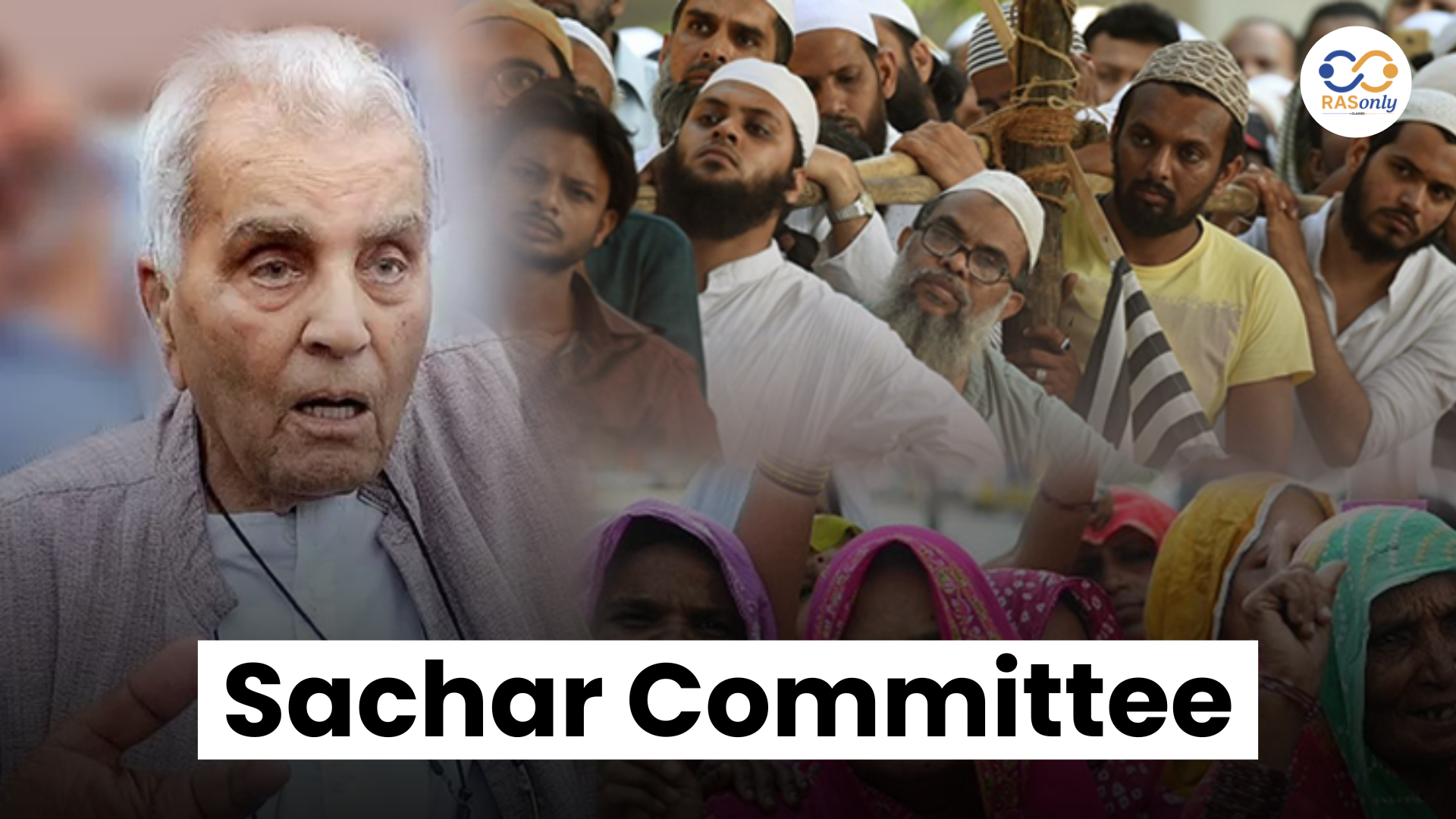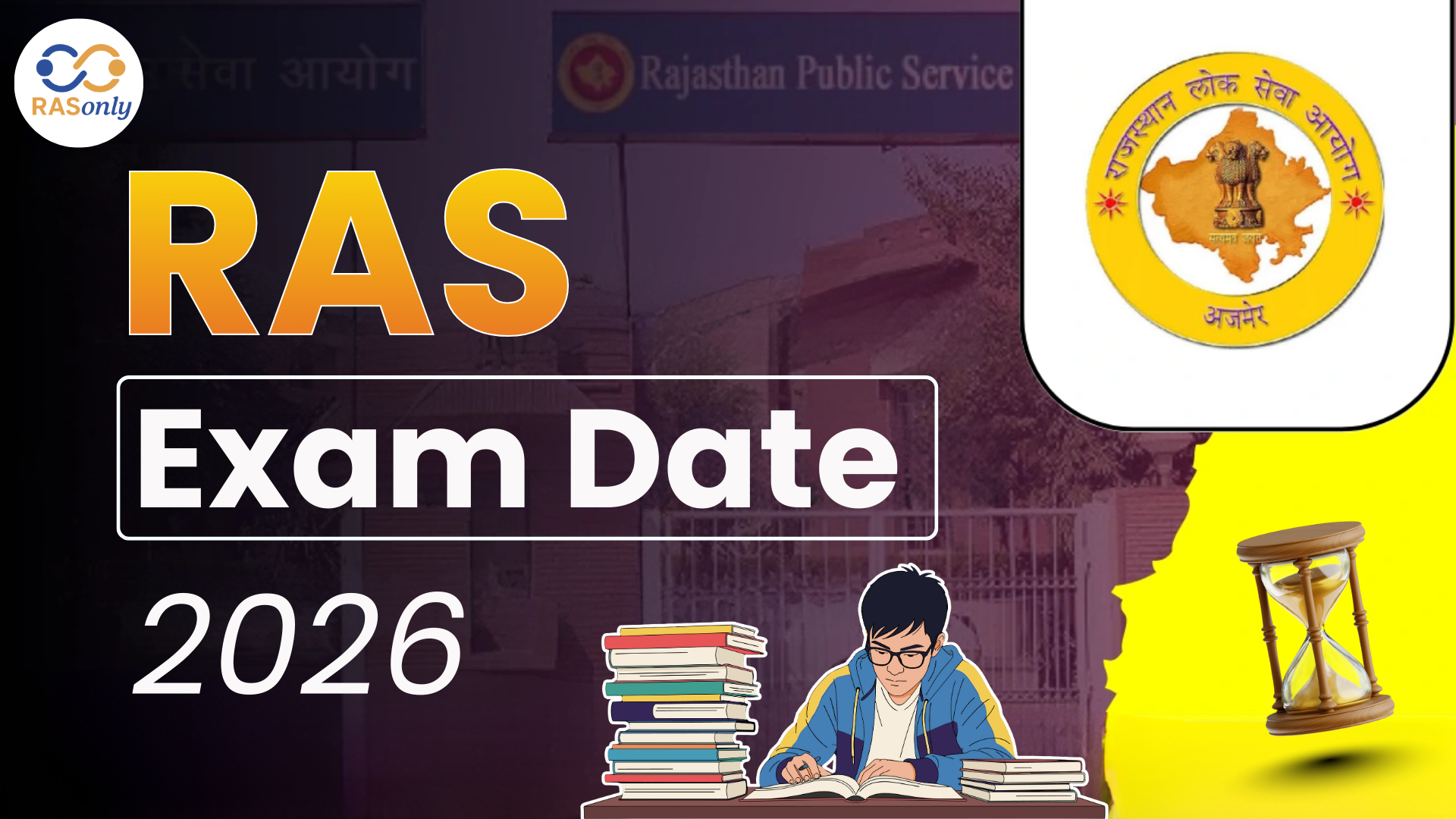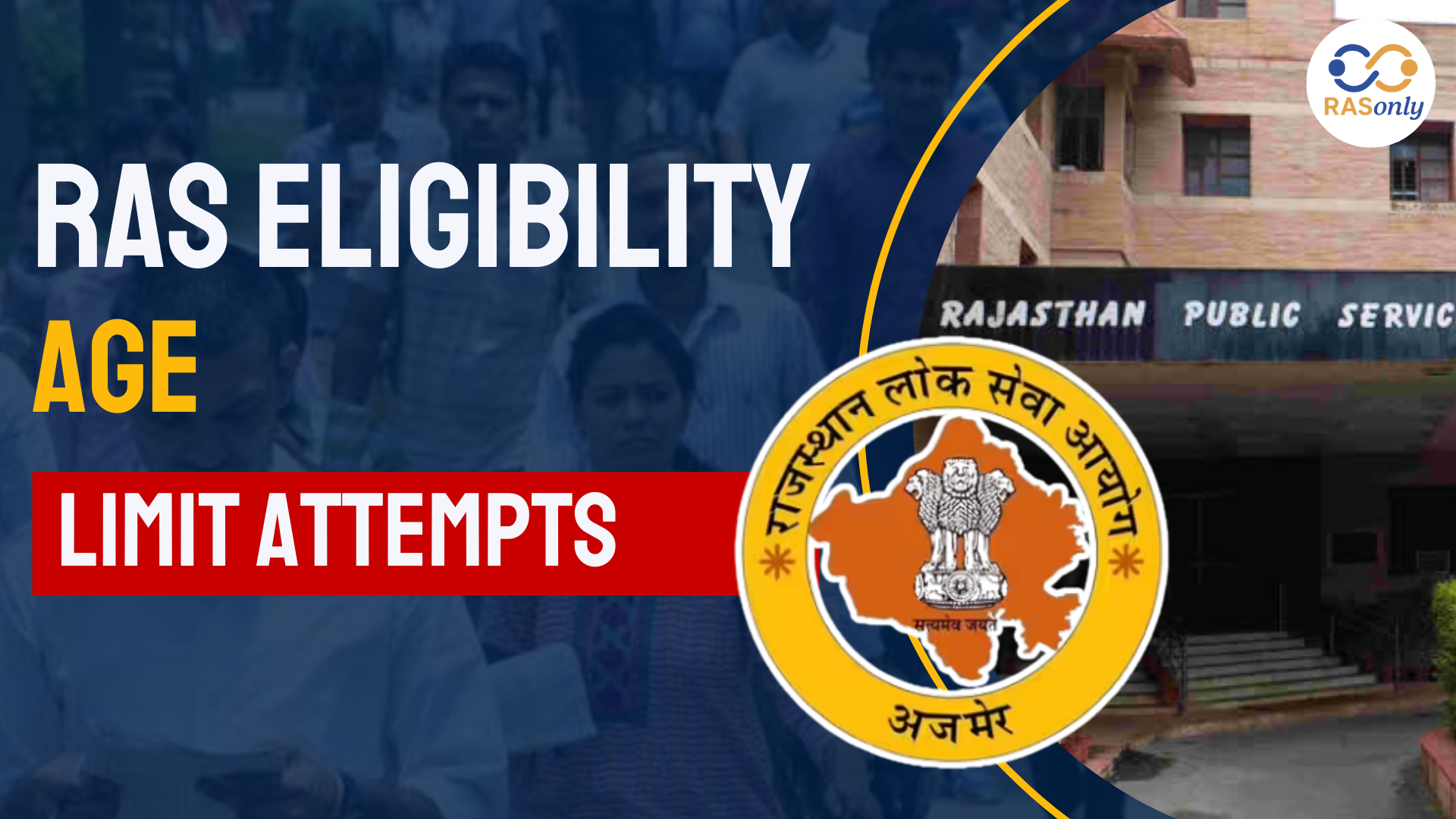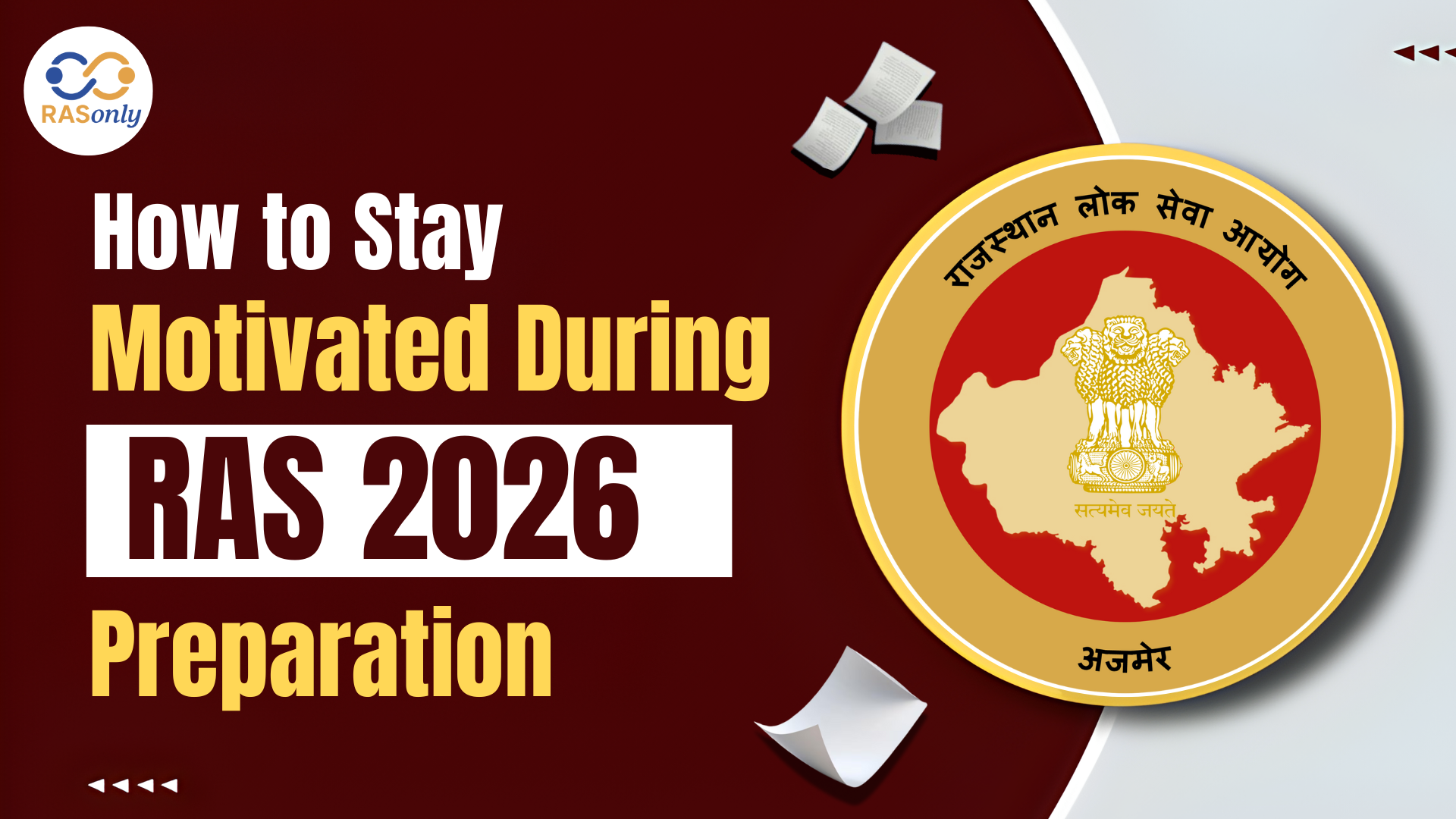RAS Exam Date 2026 for Notification, Prelims, Mains Date
- >
- RAS Preparation Resources
- >
- Sachar Committee
Sachar Committee


Sachar Committee (2005) was a committee initiated by the government headed by Justice Rajinder Sachar which looked at the socio-economic and educational status of the Muslim community in India. Muslims were poorer than SCs/STs and were under-represented in employment, government and decision-making institutions. In IAS and IPS only 3 and 4 percent respectively, even when they constitute about 14 percent of the population. Recommended an Equal Opportunity Commission, recognition of madrasa degrees and an improved political representation. Inclusive development and mainstreaming of Muslims, with reference to diversity, has been emphasized in the Report.
What is Sachar Committee?
- The Sachar Committee was a high level committee of seven members formed in March of 2005 by the Government of India.
- It is headed by Justice Rajinder Sachar (Former Chief Justice of Delhi High Court).
- To take a survey of the condition of the Muslims in India socially, economically and educationally, and recommend means of their upliftment.
Objective of the Committee
- Evaluate the economic, educational and socio economic status of Muslims in India.
- Check on Muslim involvement in the government, work and decision-making structures.
- Recommend strategies of equal opportunities and inclusive growth.
Highlights of the Report (2006)
1. Socio-Economic Status
- Muslims recorded low in relation to SCs and STs on a number of indicators.
- Large concentration of poverty, lack of bank credit as well as under-representation in terms of formal employment.
2. Education
- Muslims have very low levels of higher education.
- There is a high dropout among girls.
- The Madrasa education was significant but the graduates did not do well in mainstream jobs.
3. Employment Representation
- Representative of Civil Services
- IAS: 3%
- Five percent of the population (dramatically lower than their demographic fraction of about 14%).
- Poor representation in police, defense services and the public sector jobs.
- Unskilled labor mostly in low income jobs and insecure jobs.
4. Political Representation
- The Muslims are under-represented in elected institutions.
- The process of delimitation usually kept the constituencies where Muslims make the majority to SCs, thereby lowering their potential to RT.
5. Social Indicators
- Better sex ratio as compared to the national average in the case of Muslims (2001 & 2011).
- Urbanization: Because of the percentage of population, Muslim population lived in the urban areas more than the national average.
Suggestions of the Committee
- Equal Opportunity Commission: To correct grievances of depressed groups such as the minorities.
- Increase Representation:
- Nomination of minorities into decision making bodies and institutions.
- Revision of delimitation processes so that politics is fairly represented.
- Employment Measures:
- Increase input of Muslims in the state employment particularly those posts that require contact with the public.
- Accepting degrees of madrasas as a qualification in defence services and in civil service, and banking etc.
- Educational Reforms:
- At the same time they should make madrasas cooperate with school boards so that they can move to masters.
- Enhance access to scholarship, contemporary education and vocational training.
- Inclusive Development Policies
- Strictly embark on mainstreaming of the Muslims and appreciate the diversity.
- Enhance the infrastructure in the Muslim populated areas by having area development schemes.
Importance of reports
- This was the first official reference to systematic socio-economic deprivation of Muslims in India.
- Introduced issues of minority living into the centre of policy discussion.
- Placed the foundations of subsequent programmes such as the Prime Minister 15-Point Programme for Minorities.
Criticism of report
- Others criticized that it might give rise to appeasement politics.
- Fears of data accuracy and use of out of date sources.
- Resistance to implementation of some recommendations because of political and communal sensitivities.
Conclusion
Sachar Committee Report (2006) was a milestone in not only bringing forth the socio-economic backwardness of Indian Muslims but also the recommendations of an inclusive developmental process, equal opportunity and representation. Although there has been incomplete implementation the report provides an important source of reference on minority Welfare policies in India.
Also Read: Directive Principles of State Policy (DPSP)
Post Category
- RAS Salary
- Result
- RAS Admit Card
- RAS Job
- RAS Cutoff
- Preparation Tips
- RAS Answer Key
- RAS Exam Analysis
- RAS Syllabus
- RAS Previous Year Papers
- RPSC RAS Exam Pattern
- RAS Interview
- RAS Mains Exam Date
- RAS Vacancy
- RAS Test Series
- RAS Best Books
- RAS Preparation Resources
- RAS Coaching Centre
- History
- Polity
- Geography
- Economics
- Science
- Art and Culture
- RPSC RAS Application Form
- RPSC RAS Notification
RASonly Interview Guidance Program

Mr. Ashok Jain
Ex-Chief Secretary Govt of Rajasthan
- IAS officer of the 1981 batch, Rajasthan cadre.
- Passionate about mentoring the next generation of RAS officers with real-world insights.
- Got retired in Dec 2017 from the post of Chief Secretary of the state of Rajasthan.

Mr. Guru Charan Rai
Ex-ASP / SP in Jaisalmer
- Guru Charan Rai, IPS (Retd), retired as Inspector General of Police (Security), Rajasthan, Jaipur in 2017.
- Served as ASP and SP in Jaisalmer, Nagaur, Sri Ganganagar, Sawai Madhopur, Dausa, Sikar, and Karauli.
- He also held key positions as DIGP and IGP in the Law and Order division.

Mr. Rakesh Verma
Ex-IAS Officer, B.Tech, MBA, and M.A. (Economics)
- IAS officer of the 1981 batch and retired in Chief Secretary Rank.
- Civil servant of high repute and vast experience.
- Has been teaching UPSC CSE subjects for the last six years.
Related Post
👉🏻 Register Today to Join Classes! 👍🏻
- Team RASOnly -
🎯 Benefits of RASOnly Coaching:
- ✅ 1:1 Mentorship with RAS Officers
- ✅ Experienced and Expert Faculty
- ✅ Free Library Access
- ✅ Daily Minimum 4 Hours Must
- ✅ Comprehensive Study Material
- ✅ Regular Tests & Performance Analysis
- ✅ Personalized Guidance & Doubt Solving
- ✅ Online & Offline Class Options
- ✅ Affordable Fees with Quality Education
Key Highlights:
- 👉🏻 3-Day Refund Policy
- 👉🏻 New Batch Starting from 04 August
- 👉🏻 Registration Amount: Only ₹1000





